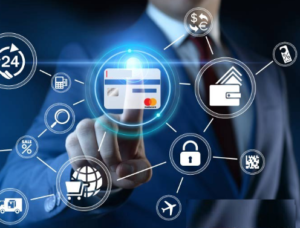Digital Payment System Technology

Digital payment methods have transformed the way modern people make transactions. From mobile wallets to online buying, digital payments are now a necessary component of every day life. But behind these apparently straightforward exchanges is something else entirely. Examining their design, security policies, and future of payment technologies, this paper explores the technology underneath digital payment systems.
Knowing Digital Payment Methods
Digital payment systems let consumers electronically move money without using checks or actual cash. For many, they are their preferred way of payment since they provide efficiency, speed, and ease. But one must first grasp their fundamental elements if one is to really value how these systems function.
Elements of Online Payment Systems
Payment gateways are technological systems designed to authorise and handle payments. Between retailers and financial institutions, payment gateways serve as middlemen guaranteeing the safe transmission of transaction data.
Transmission of payment data between the payment gateway and the financial institution allows payment processors to manage transaction processing. They guarantee that the deal is finished satisfactorially.
Merchant accounts are bank accounts enabling companies to take digital payments. They help money to be moved from the consumer’s account to the merchant’s account.
Websites, smartphone apps, point-of-sale (POS) devices consumers use to start transactions comprise customer interfaces. They offer a simple approach for entering payment data and finishing purchases.
Digital Payment Mechanisms
Digital payments work through multiple phases
The client chooses a payment option and inputs payment information using a safe interface, say a website or app.
The payment gateway encrypts the transaction data and forward them to the payment processing for authorization.
Processing:
To confirm the transaction and guarantee enough money are available, the payment processor speaks with the bank or card issuer of the consumer.
Once approved, the transaction proceeds and the payment amount moves from the customer’s account to the merchant’s account.
Typically via email or an on-screen notification, both the customer and the merchant get confirmation of the transaction.
Safety in Digital Payment Systems
Digital payment systems rely critically on security. Different methods and systems are used to protect transactions considering the sensitivity of financial data.
Ciphering
Encryption turns data into a difficult-for-unauthorized parties to access safe format. Commonly used methods for encryption of data moved between users and payment systems include Secure Socket Layer (SSL) and Transport Layer Security (TLS).
Tokenization
Tokenization substitutes a special identification or token for sensitive payment data. By processing transactions with this token instead of revealing the real payment information, data breaches are less likely.

Two-factor authentication, or 2FA:
Requiring users to submit two forms of verification before making a transaction, two-factor authentication offers an additional degree of protection. This may include something the user has like a cell phone and something they know like a password.
Systems for Detecting Fraud
Modern methods of machine learning and advanced algorithms are used to spot and stop dishonest behavior. These systems detect dubious activity by analyzing user behavior and transaction patterns.
Systems of Digital Payments: Types
There are several digital payment systems, each fit for a different requirement and inclination. The most often occurring forms are shown here:

Systems for Online Payments
Usually including credit or debit cards, online payment methods are utilized in e-commerce transactions. Some instances are Square, Stripe, and PayPal. These systems offer an easy online method of paying for goods and services.
Mobile Notes
Users of mobile wallets Apple Pay, Google Wallet, Samsung Pay can save payment data on their cellphones. By means of near-field communication (NFC) technology or QR codes, these wallets offer speedy and safe transactions.
Peer-to-peer (P2P) payment systems
P2P payment systems enable straight transactions between people. Venmo, Cash App, and Zelle among other apps simplify sending money to friends and relatives, splitting bills, or making little payments.
Contactless Notes of Payment
NFC technology allows contactless payments to enable transactions free from physical touch. Simply swiping their card or smartphone on a contactless scanner allows users to make payments, therefore providing speed and convenience.
Digital currencies
Decentered digital currencies driven on blockchain technology are cryptocurrencies like Bitcoin and Ethereum. For transactional as well as investment uses, they are becoming more and more popular as a substitute for conventional payment systems.
Digital Payment Systems: Their Future
Digital payment systems should change and incorporate fresh features as technology develops. Here’s a peep at digital payments’ future:
Integration using artificial intelligence
Digital payment systems are about to be improved in great part by artificial intelligence (AI). AI can maximize transaction processing, personalize user experiences, and help to detect fraud.
Blockchain: Technology
Renowned for security and openness, blockchain technology is probably going to find increasing presence in digital payments. By means of a distributed ledger of transactions, it can simplify transactions, save costs, and improve security.
Verification Based on Biometric Attributes
Digital payments should see increasing frequency of biometric authentication—that is, facial recognition and fingerprint identification. These systems provide a quick and safe approach to user identity verification.
Digital Currency Expansion
Bank of Centrality Various countries are looking at digital currencies (CBDCs) as a means of modernizing financial institutions and offering a digital substitute for cash. New chances for digital payments and financial inclusion could present themselves via CBDCs.
Last Thought
Digital payment systems have changed the financial scene by providing quick and easy transaction conductability. These systems’ technology consists in a complicated interaction of elements, security protocols, and developing advances. Digital payments will probably become increasingly more important to our daily life as they develop and help to define the direction of financial transactions.
Knowing the technology underlying digital payment systems improves our respect of these developments and helps us to make wise judgments in a society going more and more digital. Looking ahead, the ongoing development of digital payments promises to provide even more innovations and improvements, fast, safe, and easily accessible transactions than ever before.